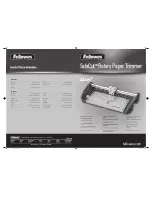
Rise time
[EXAMPLE]
For the example, the horizontal distance is 4.0 divisions.
The SWEEP TIME/DIV is 2 ps. (See Fig. 23)
Substituting the given value:
Risetime = 4.0 ( d i v ) x 2 (
JIS
) = 8
JIS
Risetime and falltime can be measured by making use of
the alternate step 3 as described below as well.
4. Use the POSITION control to set the 1 0 % point to
coincide with the center vertical graduation line and
measure the horizontal distance to the point of the in-
tersection of the waveform with the center horizontal
line. Let this distance be D^ Next adjust the waveform
position such that the 9 0 % point coincides with the ver-
tical centerline and measure the distance from that line
to the intersection of the waveform with the horizontal
centerline. This distance is D
2
and the total horizontal
distance is then Dj plus D
2
for use in the above relation-
ship in calculating the risetime or falltime.
Using the formula:
Risetime = ^ + D
2
) (div) x (SWEEP TIME/DIV
setting) x " x 10 M A G " value
1
(1/10)
Fig. 2 4
[EXAMPLE]
For the example, the measured D
t
is 1.8 divisions while D
2
is 2.2 divisions. If SWEEP TIME/DIV is 2 /ts we use the
following relationship. (See Fig. 24)
Substituting the given value:
Risetime = (1.8 + 2.2) ( d i v ) x 2 (/is) = 8/is
TIME DIFFERENCE MEASUREMENTS
This procedure is useful in measurement of time dif-
ferences between t w o signals that are synchronized to one
another but skewed in time.
Procedure:
1. Apply the t w o signals to CH1 and CH2 INPUT jacks. Set
the vertical MODE to DUAL choosing either ALT or
CHOP mode.
Generally for low frequency signals CHOP is chosen
with ALT used for high frequency signals.
2. Select the faster of the t w o signals as the SOURCE and
use the VOLTS/DIV and SWEEP TIME/DIV to obtain an
easily observed display.
Set the VARIABLE control to CAL position.
3. Using the
w
POSITION control set the waveforms to the
center of the CRT display and use the POSITION
control to set the reference signal to be coincident with
a vertical graduation line.
4. Measure the horizontal distance between the t w o
signals and multiply this distance in divisions by the
SWEEP TIME/DIV setting.
If " x 1 0 M A G " is being used multiply this again by
1/10.
Using the formula:
Time = Horizontal distance (div) x (SWEEP TIME/DIV
setting) x " x 10 M A G " value"
1
(1/10)
[EXAMPLE]
For the example, the horizontal distance measured is 4.4
divisions. The SWEEP TIME/DIV is 0.2 ms. (See Fig. 25)
Substituting the given value:
Time = 4.4 (div) x 0.2 (ms) = 0.88 ms
Time difference
Fig. 25
2 3
Adjust to the vertical scale
with
<9-
POSITION
Fig. 23
Adjust 9 0 % point to the center
and measure D
2
.
Adjust 1 0 % point
to the center and
measure Dj.
Rise time
Reference signal
Comparison signal
Summary of Contents for CS-1040
Page 1: ...CS 1 OBO CS 1 0 4 0 TRIPLE TRACE OSCILLOSCOPE INSTRUCTION MANUAL T R I O...
Page 33: ...MEMO 3 3...
Page 34: ...MEMO 3 4...













































